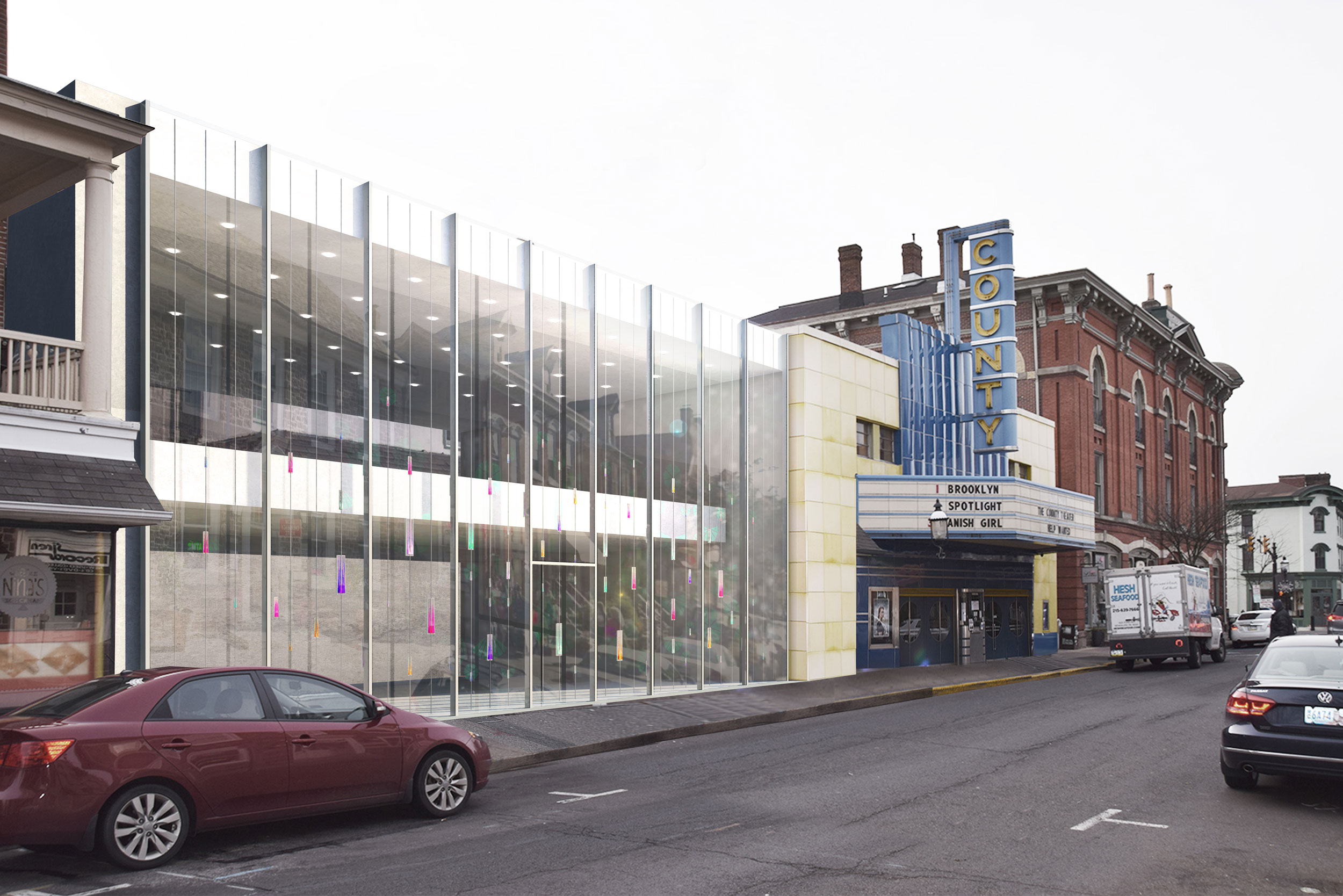

Facade as Interaction
Walking creates street, and street completes facade. We view the essence of the Historic Theater district resides not only in the materiality and physical style, but also in the form of interaction with audience on the street. Beyond singular representation, the facade is formed by wind, light, gravity and human intervention. The function of facade is not merely limited to the truthful expression of the building program, but is also to transform, conceal or expand the identity of the building.


Facade as Event
We create a field of soft fabric bands hung from the top to create complete concealment as shading device and those fabric facade to be revealed by people from inside and outside of the building. When there are less activities (Slide1), the facade only shows subtle movement by the internal air shift, fully respecting the historic presence of County Theater, a protagonist. Simultaneously, this concealed expression implies the energy of play, the image of the future. Through simple actuation device, people participate in the formation of facade design opening the curtain horizontally. The action of folding/and unfolding creates different images every moment as pedestrians pass by the building (Slide3).
Facade as Play
Ground floor has maximized openness to host events. Simple aquatic pump, embedded to the ground floor, can open and close the white curtain. The weight of a little kid is enough to actuate one side of horizontal movement. This playful action makes people to penetrate the line fabrics, touching the facade. Pedestrians as performer only contribute one part and the whole is determined by the constant flux. This will provide a new destination point along the E. State street and symbolically address the immersive theater environment in artistic and playful way.

